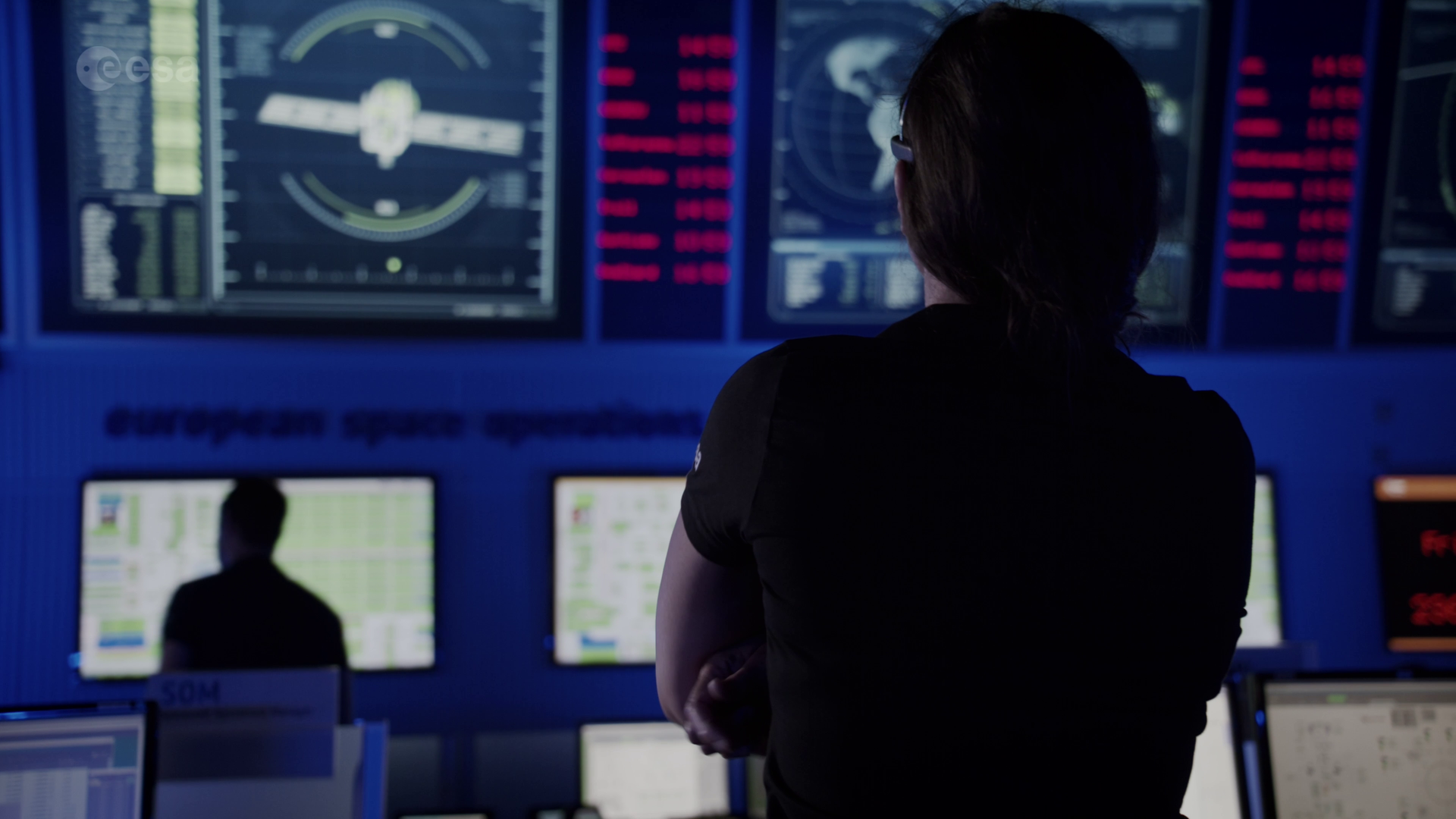Final preparations for Biomass operations
As the launch of the Biomass satellite approaches, the excitement is palpable at ESA’s European Space Operations Centre (ESOC) in Darmstadt, Germany. Over the winter months, a dedicated team has been meticulously preparing for the satellite's critical "Launch and Early Orbit" phase (LEOP).

Over the last four months, ESA’s European Space Operations Centre has been buzzing as over a hundred persons had but one word never off their lips: “Biomass”, whose launch is scheduled for 29 April aboard the Vega-C launcher.
Engineers and scientists from ESA, partners and industry. Experts from the satellite’s manufacturer and instrument teams. Specialists in satellite operations, ground segment, flight dynamics, software, and networks. All of them, gathered for the ritual exercise that preceeds every launch: the "simulation campaign".
Its goal? To mould this diverse group into a cohesive unit capable of handling the satellite's first moments in space.
The simulation campaign is designed to test the team's ability to identify and solve issues, adapt the mission timeline, and operate under stress. As part of it, the "team of teams" faces various scenarios, from software glitches to critical failures, ensuring they are well-prepared for any eventuality.
“This rigorous training is crucial to build the team’s expertise in reacting to non-nominal events and making informed decisions under pressure. It puts each and every one on console and test their knowledge of the satellite and the ground segment,” says Biomass Spacecraft Operations Manager Elia Maestroni.
Special unboxing


Access the video
More than anything, the team has rehearsed the deployment of the satellite’s 12-meter-diameter deployable reflector antenna. The complexity of Biomass and its umbrella-shaped reflector make the LEOP unique. While a satellite usually takes between three to four days to get ready for life in Earth orbit, the Biomass team will take an exceptional nine days to deploy the satellite.
“After bringing the spacecraft to life, checking its subsystem and commissioning the ground segment, our team will begin the careful deployment of the reflector. Each boom will be deployed individually before deploying the entire reflector. The whole operation will take around five days,” says Elia Maestroni.
"Precision and care are paramount in this meticulous and exceptionally long process. For this reason, we will adapt our schedule for the LEOP and rely on three shifts of eight hours instead of two of twelve. The night shift will only be dedicated to monitoring the spacecraft. I have full trust in the mission operations team to overcome this unique challenge successfully”.
Flight dynamics ready for orbit determination


Access the video
On the other side of the Main Control Room, from which the satellite will be controlled, another part of the team has been preparing for the start of its operational activities: flight dynamics. Right from separation - which will happen a bit less than an hour after launch – the team will perform one of the most critical activities in any new mission: the first orbit determination, which will precisely identify the actual orbit of the satellite.
“A spacecraft is never perfectly injected into its designed trajectory, as any imprecision in launcher performance will be reflected in the spacecraft’s actual orbit. We have been rehearsing many scenarios with different orbits – and the ways to correctly inject the spacecraft into the right orbit. Our estimation of the actual injection orbit will allow us to create a plan to move the satellite precisely and timely into its final orbit,” says Pere Ramos Bosch, Flight Dynamics Manager of Biomass.
“We have also rehearsed the deployment of the antenna and later, the ongoing orbit maintenance of the complex trajectory that Biomass needs to follow during routine operations".
Ground stations at the ready
Around the poles, at around 2,000 kilometres North of ESOC and 14,000 kilometres South, the mission’s ground stations are gearing up as well. In the last hours before launch, as part of the “network countdown”, the final tests will be carried out to make sure that all the conditions are in place for the launch.
That means checking voice and data links with the ground stations and ensuring that telemetry, telecommand and tracking as well as radiometric functions are in place between ESOC, the ground stations and the spacecraft.
Just a bit less than an hour after launch, ground stations engineers at the Troll Station in Antarctica will receive the first signals from the satellite. Soon after, telemetry will start to flow to ESA mission control in Germany.
The mission will rely on a network of ESA and non-ESA ground stations, including Kiruna, Inuvik, Svalbard, and the above-mentioned Troll station. These stations will provide telemetry for up to ten minutes per pass, ensuring continuous monitoring and data collection.
Dress rehearsal
All the preparations will comprehensive final simulation of the countdown and launch sequence, scheduled on 23 April, that puts together teams at ESOC with the joint ESA, Arianespace and industry launch team in Kourou.
During the rehearsal, the mission control team will receive live signals from the satellite via an umbilical connection that will be disconnected shortly before launch. Once this last step is completed, mission control will be fully to launch Biomass and give it the GO!


